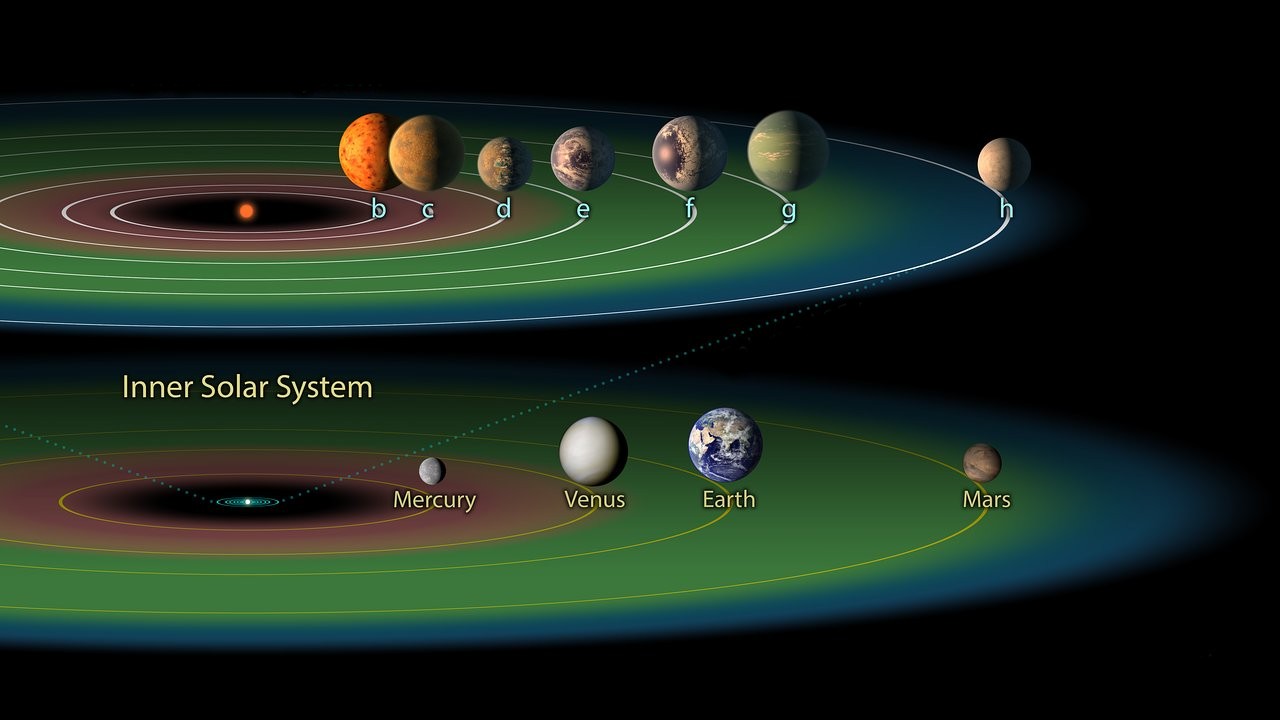How many planets fit into a star’s habitable zone?
The habitable zone of our Solar System is relatively narrow. Mars is at the very outer edge of it, while Venus, which orbits closer to the Sun than Earth, is not quite inside it. Of eight planets, only the Earth is at just the right distance from its host star. A ratio like this would naturally lower the chances of finding inhabitable worlds in the universe. But is the Solar System an exception or the rule?
Astronomers have, in fact, found other star systems that give a rosier outlook. For instance, three planets are in the habitable zone of the red dwarf, Trappist-1. In a study in the Astronomical Journal, the astrobiologist Stephen Kane from the University of Colorado has determined what the maximum possible number of inhabitable planets could be. With his team, he tested models of a wide range of different planetary systems to find out how the members of these systems interacted with each other over billions of years.
The results: up to seven planets could be in stable orbits within a star’s habitable zone and thus could sustain liquid water on the surface. For a star of our Sun’s size, the maximum is six. So why is the Earth the only inhabitable planet in our system? It’s Jupiter fault, the researchers say. Systems reach the theoretical maximum only if they do not contain gas giants like Jupiter. Therefore, in the search for star systems with the highest chances of life, we should be looking for those without gas giants.
